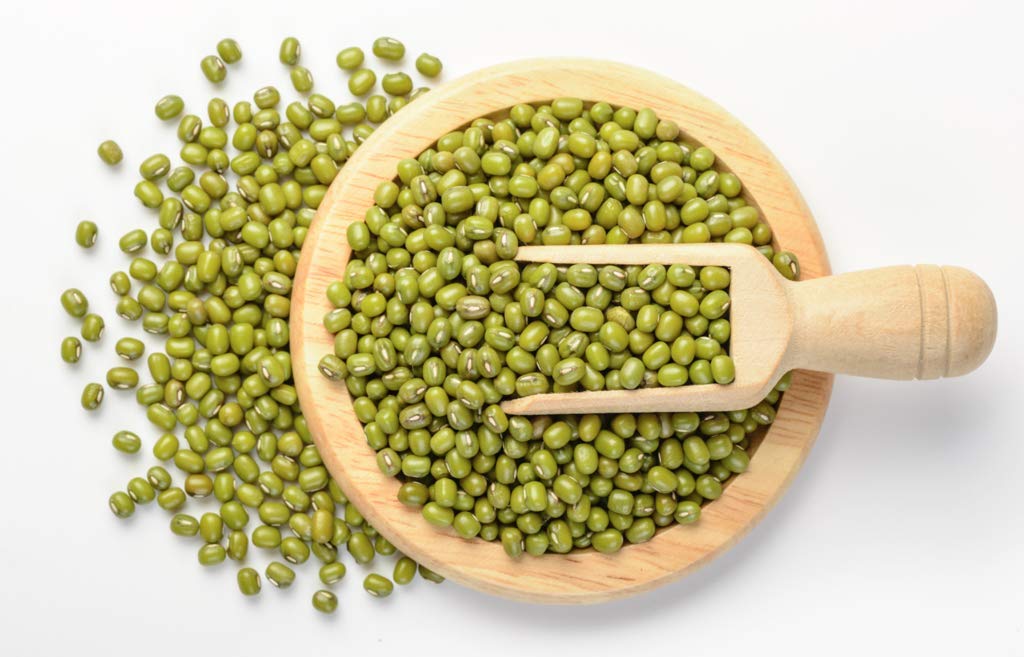Moong or Green gram is a small ¼-inch, round, olive-green bean that is mustard or off-white coloured inside. The beans have a sweet flavour, soft texture and are easy to digest. Green gram is available in many forms including whole, split, de-husked (yellow) and ground. Split Moong beans or green Moong Dal is Green gram that has been split but not skinned. Since the husk is not removed completely, the green colour is retained. The splitting is done in a mill.
Green Moong dal a traditional ingredient in Indian cooking, often used in curries. Like other legumes, split green gram is low in fat and high in protein and fibre, but it has the added advantage of cooking quickly. Due to its mild, earthy flavour, green Moong dal is best cooked with assertive flavourings.

Green gram is a warm weather crop and comes up in areas receiving an annual rainfall ranging from 50 to 70 cm. It is mainly cultivated in a cereal-pulse cropping system primarily to conserve soil nutrients and utilize the left over soil moisture particularly, after rice cultivation. Hence, although it can be grown in all the seasons, majority of green gram cultivation falls in either Rabi or late Rabi seasons particularly in peninsular India.
Optimum temperature range for growth is 27-30oC. A dry harvest period is desirable as this forces the crop to mature and reduces the risk of weather damage. Green gram is less tolerant to water logging.
India is the world’s largest producer as well as consumer of green gram. It produces about 1.5 to 2.0 million tons of Mung annually from about 3 to 4 million hectares of area, with an average productivity of 500kg per hectare. Green gram output accounts for about 10-12% of total pulse production in the country.

Green Mung – Nutritional Powerhouses
- Good source of protein
- Good source of dietary fiber (helps to lower cholesterol, prevents constipation and keeps you feeling full)
- Low in sodium
- Low in cholesterol
- Vitamins: A, B Vitamins (Thiamin, Riboflavin, Folic Acid, Niacin, Vitamin B6, Pantothenic Acid) Vitamin E, Vitamin D, Vitamin C, Vitamin K.
- Minerals: Calcium, Potassium, Iron, Magnesium, Phosphorous, Zinc, Copper and Manganese.
- Sprouted Green Mung Beans produce live enzymes
- Mung Beans are low on the glycemic index at 25 and have a low glycemic load of 4 making them a smart food choice for diabetics. Diabetics can safely eat Green Mung Beans. The low glycemic index, fiber and protein help to regulate blood sugar.
- They also contain skin anti-aging properties that stimulate the production of hyaluronic acid, collagen, and elastin, all essential to younger healthier skin.